Are there ghosts in here? The words shot from my brain straight through my mouth without warning. I was standing in the lobby of the Legendary Blue Horizon boxing venue in Philadelphia at the beginning of an impromptu tour conducted by co-owner Vernoca Michael.
I don’t know where that thought came from. I didn’t sense anything in the room. No weird feeling or wisp of breeze across my face. It was an innocent statement in a 150-year-old place tattered with dust, peeling plaster and memories.
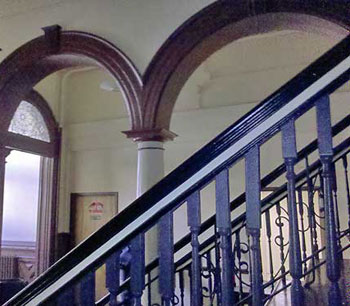
At a time when boxing has found pristine lodgings at multimillion-dollar casinos, the Blue – as it is respectfully called – felt like a place out of sorts. It was an anachronism waiting for the final push of history, which would be coming any day now in the form of a spanking new hotel and restaurants.
 Sure, there are ghosts, Michael said matter-of-factly. Sometimes when she was there by herself, she’d hear people walking in some of the rooms. One night, she said, her play-son was taking a lunch break when he heard a party going on elsewhere in the building. He phoned her, wondering if she’d booked a party. She had not. So he went investigating and found nothing.
Sure, there are ghosts, Michael said matter-of-factly. Sometimes when she was there by herself, she’d hear people walking in some of the rooms. One night, she said, her play-son was taking a lunch break when he heard a party going on elsewhere in the building. He phoned her, wondering if she’d booked a party. She had not. So he went investigating and found nothing.
These days, spirits may the only thing knocking around at the Blue, Philadelphia’s last private boxing venue. Michael invested in the place in 1994 after her Alpha Kappa Alpha Sorority sister Carol P. Ray told her about it. Michael had never been to a fight before. She had not even been to a cabaret before (influenced likely by her upbringing in the home of a Methodist minister).

“I didn’t know anything about boxing,” she said. “I didn’t know anything about the Blue Horizon. I had never been in it. I was supposed to be an investor. That’s it. … I figured I’d lose money, so what.”
Well, that wasn’t the end of it. Less than five years later, she found herself running the place. She still didn’t know much about boxing, and the men who controlled the sport didn’t much like the idea of a woman invading it, she said. So, she taught herself.
“I studied and decided to do it my way when the boxing community wouldn’t teach me,” Michael said. She became the first female boxing promoter in the state in 1998, she said.
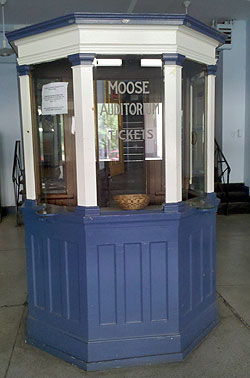
Her promotion company did more than arrange fights at the Blue, which itself was named by readers of the notable Ring magazine as “the best venue in the world to watch a fight.” In a 1996 article, Sports Illustrated gave it rave reviews for its rawness.
“My emphasis was on young people who were learning the boxing business and … (teaching them) how to conduct (their own) business,” she said. “That’s why my boxing promotion company was different from others.”
“I treated the boxers like my children and got involved with working with them around their issues and their problems.”
She also set up a program called Nia Kuumba to offer training and internships at the Blue for high school and college students. She made presentations at schools using lessons, equipment and other items associated with boxing to teach math, science and other subjects.
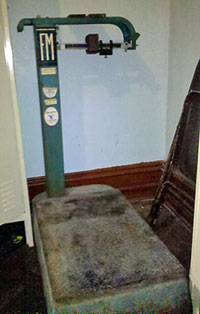
Michael and her partners rebuilt the infrastructure of the Blue and made some renovations. The place seemed to have drawn as much blood from them as the fighters from each other in the ring. Boxing itself had seen its heyday by the time the partners took over, but they brought it out of the shadows and made it a popular sport again.
The owners started out with six fights a year and then increased them to eight to 10 for both professionals and Golden Gloves amateurs, according to Michael. Philadelphia’s Charles “The Hatchet” Brewer fought to defend his International Boxing Federation super middleweight title in the first world title match at the Blue in 1997.
Movie scenes were also shot at the Blue: “Rocky V” and Walt Disney’s “Annapolis.” Companies shot commercials there, too.
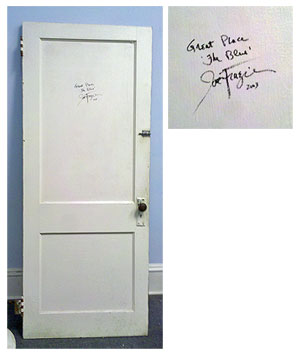
During the tour with Michael, you could still see the opulence that was once the Blue. Antique inlaid floor tiles. Stained glass windows (now covered) in the auditorium. Beautiful old chandeliers.
From the first floor, we walked up old wooden stairs to the second level where parties, weddings and other special events had filled a wide ballroom that still had its band stand. The lighted “Ballroom” sign was still above the door, as well as a “Gents” sign over a bathroom door on one floor. The “Ladies” sign was missing.
The signs were likely from the time when the Loyal Order of Moose Lodge No. 54 owned the building, which was comprised of three mansions built by the nouveau-riche around 1865. The Moose took it over in 1914, added a ballroom, two auditoriums and a bar, and made it their headquarters.
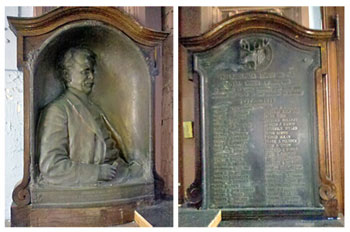
The Moose kept the building until around 1961 when it was sold and converted into a fighting venue named after a song from a 1930s film. The first main event was a bout between George Benton, a top middleweight contender who never earned a world title, and Chico Corsey. Benton bested him in a third-round knockout.
Even with a ring set up in the center of the floor, the auditorium still had signs of the Moose era. Near the stage with the catwalk was a bronze relief bust of John W. Ford who led the lodge at the time, along with a plaque of members who died in World War I and a Moose head above the stage.
The original theater movie chairs were affixed around the ring on three sides in the balcony. Under the seats were metal rings where men stored their hats. At the back of the balcony, you could still see the square cutout holes in the walls of the projection room where Moose members watched movies. The renovations were designed by Carl P. Berger, a Philadelphia architect with a background in theater and set design, and a Moose member.
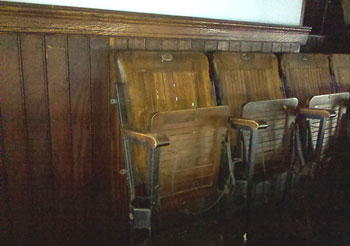
Taking a seat in one of the chairs, I understood the Ring’s characterization of the Blue. From the floor, the balcony seemed far away from the ring. Sitting there, the ring seemed so close that you could touch the fighters. I’m not a fight fan, so I could not imagine being energized by the spit, blood and sweat flying off the fighters and onto me.
The Blue closed in 2010, and the owners are in negotiations to sell the building. It is expected to become a hotel with restaurants, and possibly a boxing museum.
“When you boxed at the Blue Horizon, you received the Good Housekeeping seal,” Michael said. “It means you’ve arrived.”
